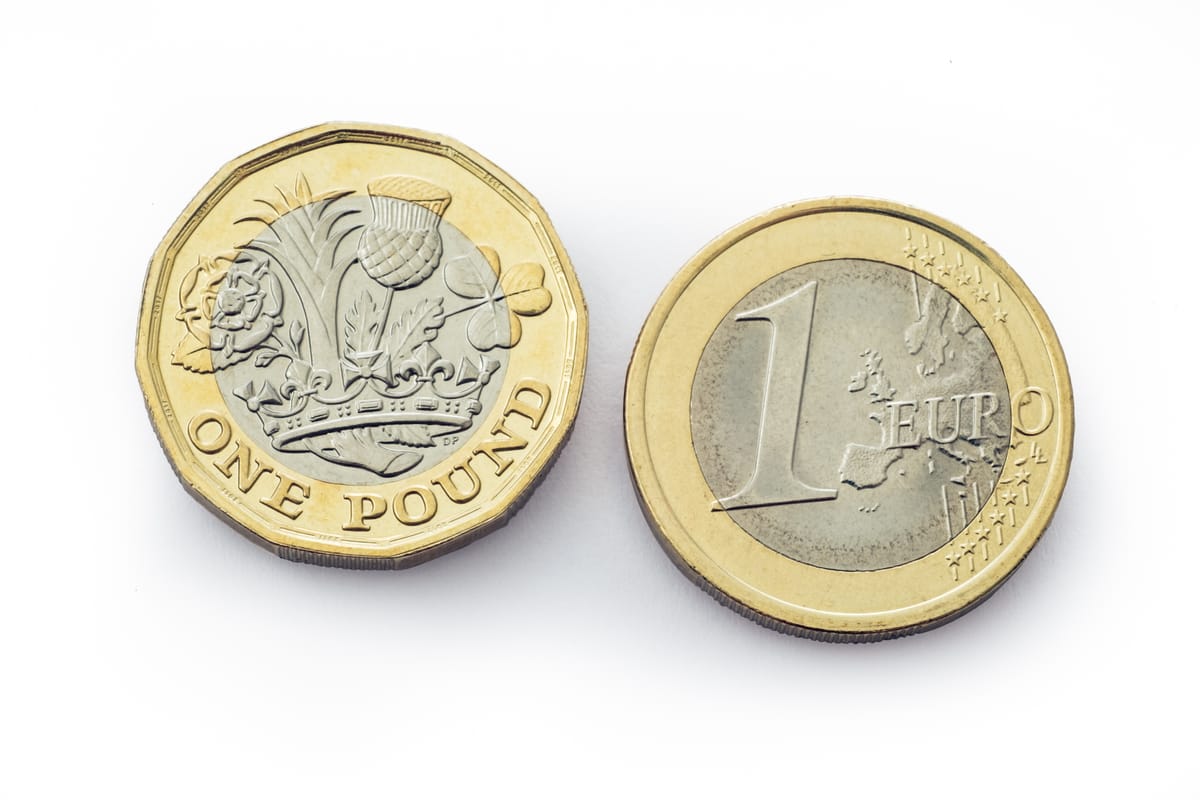GBP/EUR exchange rate week review: pound drifts higher versus euro
21/04/2025 to 25/04/2025: The pound edged higher against the euro following the emergence of a positive market mood and an unexpected jump in UK retail sales that boosted the economy.

Monday
The pound euro (GBP/EUR) exchange rate started the week at around 1.162 and remained flat amid an empty economic calendar due to the Easter bank holiday.
Tuesday
The pound euro rate rose to within touching distance of the 1.17 benchmark amid increasing risk appetite and optimism surrounding the potential impact of trade tensions on the UK economy.
The euro was dented by the improving market mood, a recovering dollar, and deteriorating consumer confidence in the Eurozone, which fell to an 18-month low.
Wednesday
The pound euro rate fluctuated between the 1.17 and 1.16 ranges after PMIs pressured both currencies. A shock contraction in British service sector activity followed weaker-than-forecast Eurozone PMIs.
The UK services sector PMI dropped to 48.9 in April from 52.5, falling from a seven-month high in March to a 27-month low. The UK composite PMI, a measure of the private sector economy, dropped to 48.2 in April from 51.5 the previous month – marking the lowest reading since November 2022.
Euro sentiment was also knocked by its negative trading relationship with a rising dollar and a risk-on market mood.
Thursday
The increasingly risk-sensitive pound drifted above 1.17 versus the safer euro as the market mood became positive. However, a data lull and lingering headwinds from the downbeat PMIs on Wednesday limited the UK currency’s upside.
The euro struggled despite Germany’s latest business climate index exceeding expectations in April. A shift to a risk-on market mood hampered the single currency, along with Germany downgrading its growth forecast for this year to 0% amid US tariffs.
Friday
The pound euro exchange rate remained a fraction above 1.17 as the week ended after UK retail sales unexpectedly increased 0.4% in March before Donald Trump announced sweeping trade tariffs. The data showed that the volume of goods bought far exceeded economists’ expectations for a 0.4% contraction.
With Eurozone data absent from the economic calendar, the single currency traded without a clear direction.
Looking ahead
A lack of influential data from the UK economy means investor attention will focus on a raft of figures from the Eurozone – notably German and Eurozone GDP prints on Wednesday and inflation figures from the bloc on Friday.
